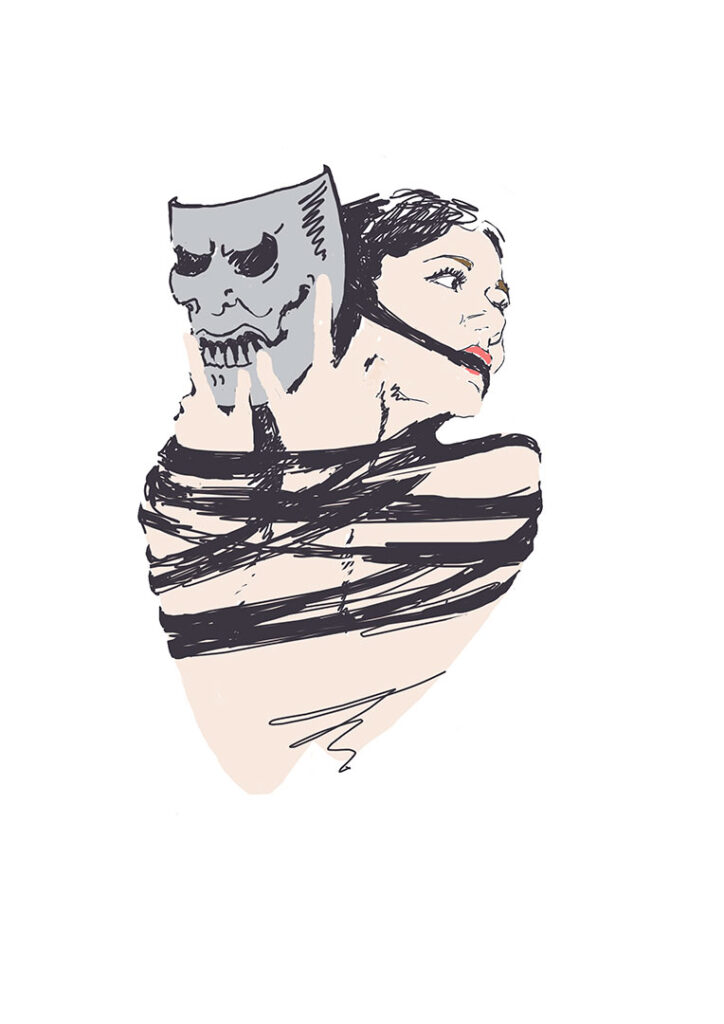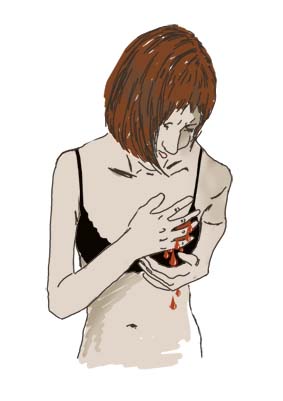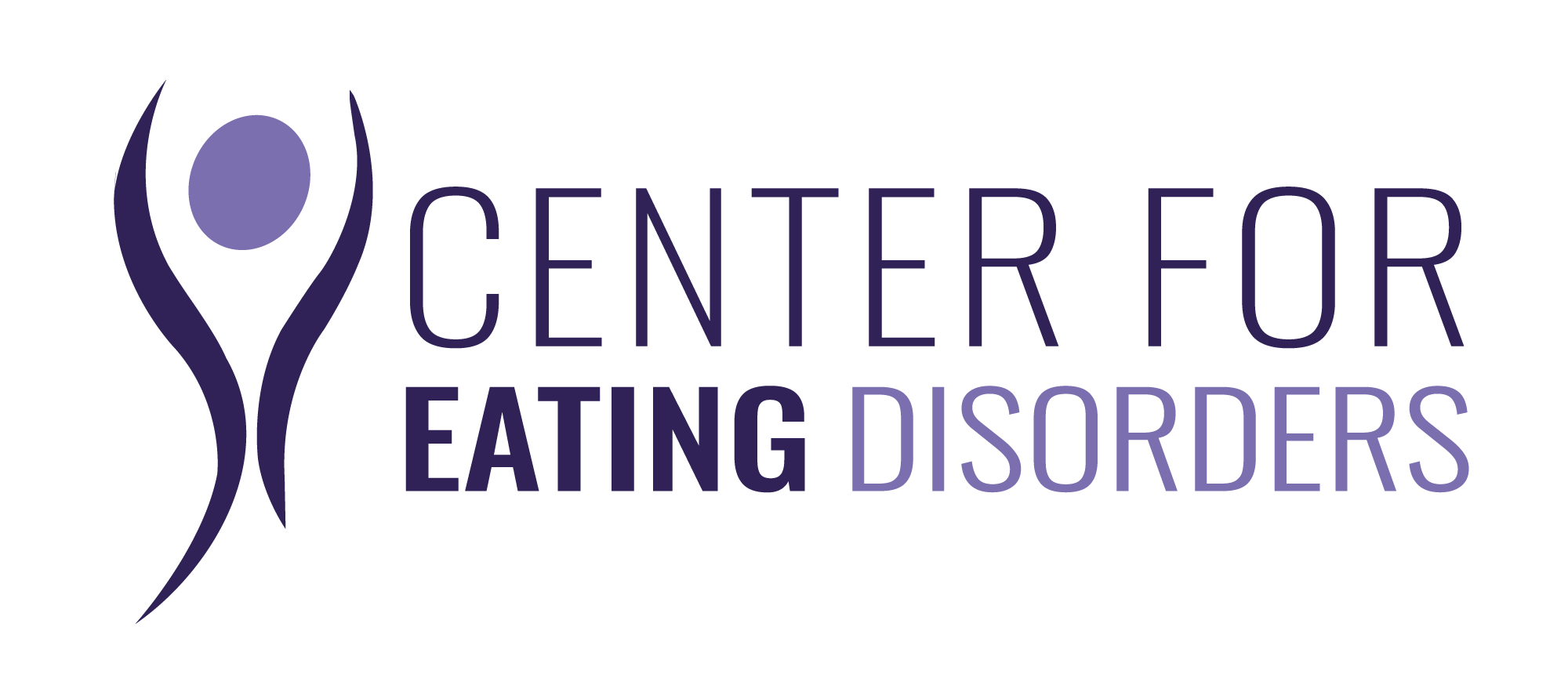Disease impressions

Anorexia, leave me alone!
The woman is trapped in her illness. Her hands are tied and she cannot fight alone. She pushes away the devil’s mask, which symbolizes the disease, and turns her head to the side to distance herself from the insidious anorexia. But she does not manage to get rid of the disease.

How can you be so fat?
This picture is very characteristic of an eating disorder. The patient sees herself and her body no longer real, but rather too fat and swollen. She has lost all connection to her body. Even if she is made up of skin and bones, she feels and sees herself as a fat person whom she disgusts. She suffers extremely and wants to gain more and more control over her body. From this she develops a treacherous sense of power, which allows the patient to slide even deeper into anorexia.

I’m such a bad person
Those affected no longer have self-esteem. They feel and see themselves as a bad person who is not worth loving. They are lonely, injured and thus withdraw more and more. They feel that nobody likes them, that they can not do anything, that they are bad at everything and that they are not worth living. In every affection, in every compliment or offered help, something negative is interpreted.

Despair
The patient is desperate. She senses that something is wrong with her, but she cannot put it into words. She is emaciated, she is alone, she is ill. But she is ashamed. How should she call for help if she feels that no one understands her, that she no longer understands herself? How do you get out of this weird disease? Can you ever get well?

Only no femininity
The patient would do anything to develop no femininity and thus no feminine curves. Those affected do not feel as womanly or male and have no relation to their body. They do not want to be touched and disgust themselves.

It hurts so bad
This young woman is literally bleeding the heart. She is torn inside, she is doing very badly. She has no relation to herself, to her body and to her life. She suffers and needs urgent help.

Face to face with the disease
The patient looks her illness in the face. She is feeling bad, she is alone and not completely “slipping”, she begins to build her own world. She withdraws more and more from family and friends and turns more and more closely to her illness. No one gets to her anymore, nor can she understand. But now she has the devilish illness with which she is allied.

Come with me
Here, the affected person decides for the disease and dives into this for outsiders eerie world and relationship. The patient is becoming more and more one with anorexia. She becomes her friend, her life, her world. She can not get rid of her anymore. She also does not want to get away from her, because she is afraid that she will not have any more what makes her special, what makes her unique.

High, higher, higher and higher … but never arrived
This is again about the much too high goals of the anorexic or bulimic. Those affected scream for love and appreciation and try everything to get it through performance. They define themselves through their successes or failures, but can no longer distinguish that they can not see their value as human beings. They are more and more deviating and hiding more and more in the disease. Thoughts are constantly circulating through their heads like “I’m worth nothing”, “I can not do anything”, “I’m not good for anything”. Not only girls but also more and more boys are affected by this sinister disease, who urgently need help.

I have to do my best
This picture symbolizes the extremely pronounced perfectionism of those affected. They want to deliver everything they do to the fullest satisfaction and perfection. Unfortunately, they are never satisfied with themselves or their performance, because the bar is not 100%, but far beyond. They begin to devaluate as a whole person and not just their performance.

Captured
This young woman is trapped in her own world, where everything revolves around the kilo on the scales, the hip circumference and other measurable values. She is constantly circling only the information on the scales and eating or not eating in the head. She is never satisfied with the kilos, she is constantly driven by her illness to weigh a little less. As a result, she gets into a frenzy and has the feeling that she has the disease under control. Unfortunately, the reality is different and the disease has the anorexics under control.

Life, I’m coming!
In this picture you see an anorexic patient in the therapy, which has hope again. She sees and feels that one can get well and especially that it is worthwhile. Life is waiting for her and she sees the colors, the beauty, the joy again. She does not look back, she has decided to get well. Slowly she steps out of the darkness of illness and struggles for her life. She now knows that she is on the right track.
Psychological aspects of eating disorders
The psychological aspects of eating disorders play a crucial role in understanding and treating these illnesses. The profound intertwining of emotional turmoil, negative self-images and dysfunctional coping mechanisms makes it clear how important it is to look beyond the surface of food intake and weight problems. The inner world of those affected is often characterised by intense feelings of worthlessness, fear of rejection and a distorted self-image, which are both caused and exacerbated by the illness.
In addition, interpersonal relationships and social interactions are often strained, as those affected become increasingly isolated or experience misunderstandings and conflicts within their circle of family and friends. This underlines the complexity of the psychological aspects of eating disorders, which go far beyond the eating behaviour itself and deeply affect the core of the self-image and emotional processing of those affected. To address these complex challenges, a multidisciplinary treatment approach is required that integrates psychotherapeutic, nutritional and medical components.
Ultimately, overcoming the psychological aspects of eating disorders requires a deep understanding of the individual suffering stories and needs of those affected. An empathic, patient-centred approach that recognises and respects the uniqueness of each individual is crucial to the path to recovery and regaining a healthy, self-determined life.

